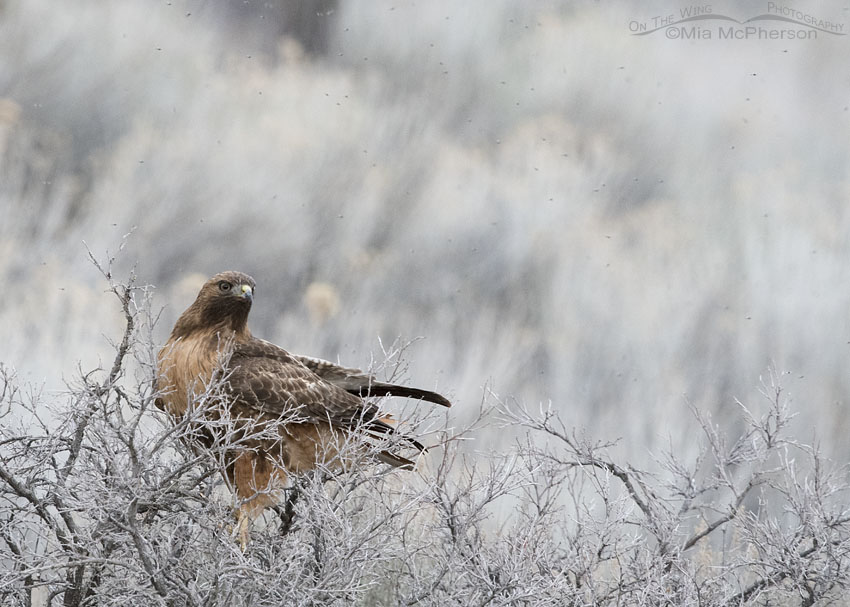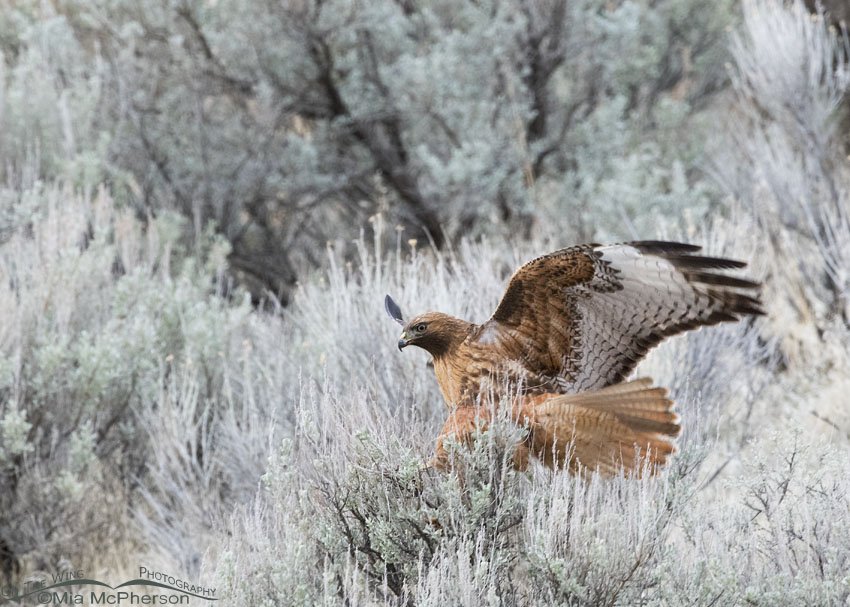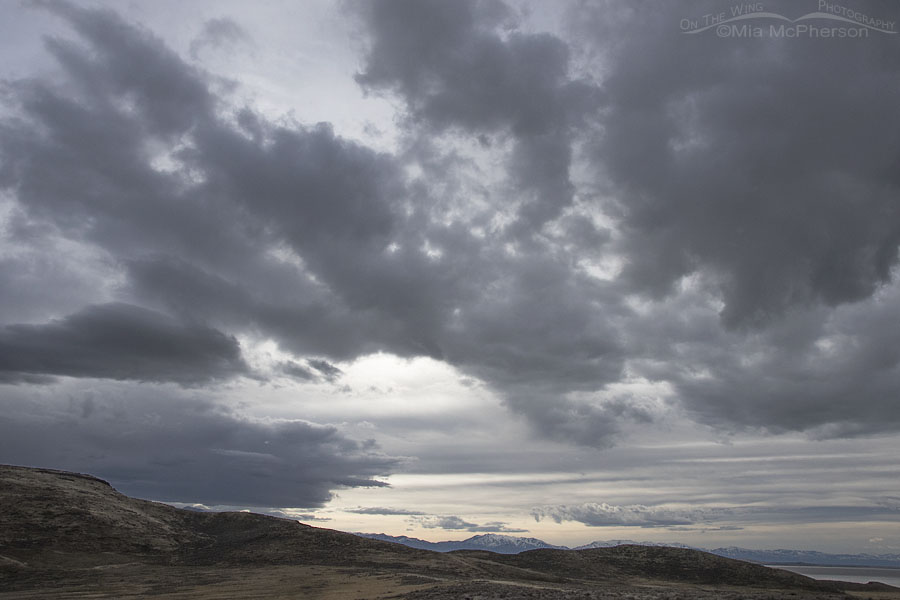 Red-tailed Hawk, midges and low light – Nikon D500, f7.1, 1/500, ISO 2500, +0.7 EV, Nikkor 500mm VR with 1.4x TC, natural light, not baited
Red-tailed Hawk, midges and low light – Nikon D500, f7.1, 1/500, ISO 2500, +0.7 EV, Nikkor 500mm VR with 1.4x TC, natural light, not baited
Yesterday morning three different radar/satellite showed very few clouds north of Salt Lake City and since I had been cooped up for so long it seemed like heading north was a good thing to do to get out, photograph birds, see a little sunshine and relax in the field.
Wrong. The radar/satellite images were wrong, wrong, wrong. There were clouds, lots and lots of clouds.
I always try to be optimistic, positive and to do the best I can do with the light I have but I will tell you something… the light was so bad that even my eyes were struggling yesterday to see and identify birds, they just looked like dark, bird-shaped blobs.
I would have been totally skunked yesterday if I hadn’t spotted the top of this Red-tailed Hawk’s head and some wing movement where it was buried in a sagebrush next to a hillside. I quickly bumped my ISO up to 2500 just to get some shutter speed. When it flew to a second bush I could see more of its body than I could on the first bush but the light was so bad that I am not very happy with this photo but I wanted to share it anyway because when I got home and viewed it on my monitor I could see a cloud of midges around the bird. Those teeny little salt & pepper looking spots above and around the hawk are the midges.
 Red-tailed Hawk landing on sage in low light – Nikon D500, f7.1, 1/320, ISO 2500, +0.7 EV, Nikkor 500mm VR with 1.4x TC, natural light, not baited
Red-tailed Hawk landing on sage in low light – Nikon D500, f7.1, 1/320, ISO 2500, +0.7 EV, Nikkor 500mm VR with 1.4x TC, natural light, not baited
When the Red-tailed Hawk took off from the second bush and flew south I was able to track it and photograph it as it landed on a third bush. There is quite a lot of motion blur shown here on the tail and the wing tips but even at ISO 2500 my shutter speed was slow. It was definitely frustrating but at least I was out photographing a bird. Right?
I’m pretty sure the Red-tailed Hawk was looking for nesting materials but I wouldn’t bet my totally imaginary farm on it. After the hawk took off from this sagebrush it flew up high and circled around the top of a cliff for a bit before it disappeared from my sight.
 Cloudy skies over Box Elder County and the Great Salt Lake – Nikon D810, f10, 1/2000, ISO 500, Nikkor 18-200mm VR at 18mm, natural light
Cloudy skies over Box Elder County and the Great Salt Lake – Nikon D810, f10, 1/2000, ISO 500, Nikkor 18-200mm VR at 18mm, natural light
This is what the skies looked like most of the time I was looking for birds yesterday morning. This is not what the radar/satellite showed. At all.
On the up side I did hear a Long-billed Curlew yesterday but I didn’t see it in the absolutely cruddy light, I heard a Sora calling, saw and heard my first of the year Say’s Phoebe and to my delight I also saw my first of the year Turkey Vultures. I saw Tundra Swans flying overhead, one Golden Eagle, one immature Bald Eagle, several Northern Harriers and one Rough-legged Hawk. There were little birds too but in the gloom they were just little dark blobs that I couldn’t ID.
I am glad I went if for nothing else to get out of the house and to see the birds but I sure wish the light had been better.
Life is good.
Mia
Click here to see more of my Red-tailed Hawk photos plus facts and information about this species.


Like everyone else…I’m impressed with how well you employed the poor light to create some wonderful images. Thanks Mia.
Yeah, but you captured beautiful images of this spectacular redtail! AND you got out and about, so the day was not a total loss!
“Cruddy light”, BEAUTIFUL effect…..
Despite not having captured photos you wanted, it sounded like a nice day for being out and seeing first of the year birds.
I absolutely love these. The contrast is beautiful. Good for you for getting outside.
I like the contrast with the bird and sage, and the clouds seem so ominous. big thumbs up
Love the photo. Your positive attitude is your strongest asset
The “cruddy” light you were forced to deal with sure produced a beautiful, soft ambiance…these shots of rich, warm brown bird against silver sage,in silver light, are spectacular!!! No sympthathy here…just appreciation….
I think these photos are great. Yes, low light but you still take amazing photos.
Once again I have to thank you for showing what the D500 can do under such bad conditions. It manages high ISO quite well and that is a very useful information.
And being able to see the midges on the first photo is amazing.
Thanks for sharing.